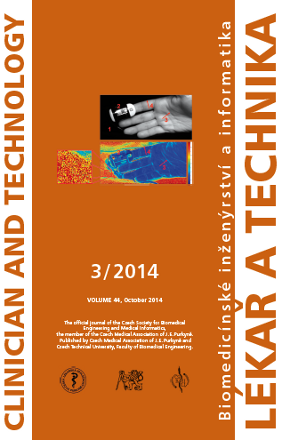THE BIOMECHANICAL MOVEMENTS FOR THE DISABLED BASED ON ART THERAPY
Keywords:
art therapy, motor and sensory functions, biomechanical movements, artistic means of expression, biomechanical principles, methodology, biomechanics of joints and systems, rehabilitation, physiotherapy, physical disabilityAbstract
The purpose of the published work is to open up to new possibilities in the area of treatment processes within rehabilitation, physiotherapy and consequent movement re-education processes for people with disabilities, posttraumatic conditions, or degenerative disease. Art therapy presents a special kind of locomotive biomechanical algorithms focused on creative skills development, emotional development of physically or socially disturbed individuals. Art therapy is used for training and maintenance of motor and sensory functions, as a controlled and targeted activity during which the clients work with the artistic means of expression. The work proposes and describes a methodology, whose purpose is to follow and build on the classic rehabilitation of the physically disabled patient. To compare the effectiveness of the proposed methodology, the observations were made in two patient groups. The control group A and the experimental group B were included in the art therapy of the methodology of the ankle joint movement. After completing the art therapy, the experimental group B showed demonstrably better results in improving their plantar flexion by 8° on average compared to group A. The motivation and subsequent improvement of the patients’ agility is the best answer to questions of quality and contribution of using the Methodology of biomechanical movements using art therapy.Downloads
Published
Issue
Section
License
Copyright (c) 2017 Jana Mušinská, Ivana Židík, Jozef Živčák

This work is licensed under a Creative Commons Attribution 4.0 International License.
Authors who publish with this journal agree to the following terms:
- Authors retain copyright and grant the journal right of the first publication with the work simultaneously licensed under a Creative Commons Attribution License (https://creativecommons.org/licenses/by/4.0/) that allows others to share the work with an acknowledgment of the work's authorship and initial publication in CTJ.
- Authors are able to enter into separate, additional contractual arrangements for the non-exclusive distribution of the journal’s published version of the work (e.g., post it to an institutional repository or publish it in a book), with an acknowledgment of its initial publication in this journal.
- Authors are permitted and encouraged to post their work online (e.g., in institutional repositories or on their website or ResearchGate) prior to and during the submission process, as it can lead to productive exchanges.
CTJ requires that all of the content of the manuscript has been created by its respective authors or that permission to use a copyrighted material has been obtained by the authors before submitting the manuscript to CTJ. CTJ requires that authors have not used any copyrighted material illegally, as for example a picture from another journal or book, a photo, etc. It is the author’s responsibility to use only materials not violating the copyright law. When in doubt, CTJ may ask the authors to supply the pertinent permission or agreement about the use of a copyrighted material.
The opinions expressed in CTJ articles are those of authors and do not necessarily reflect the views of the publishers or the Czech Society for Biomedical Engineering and Medical Informatics.


